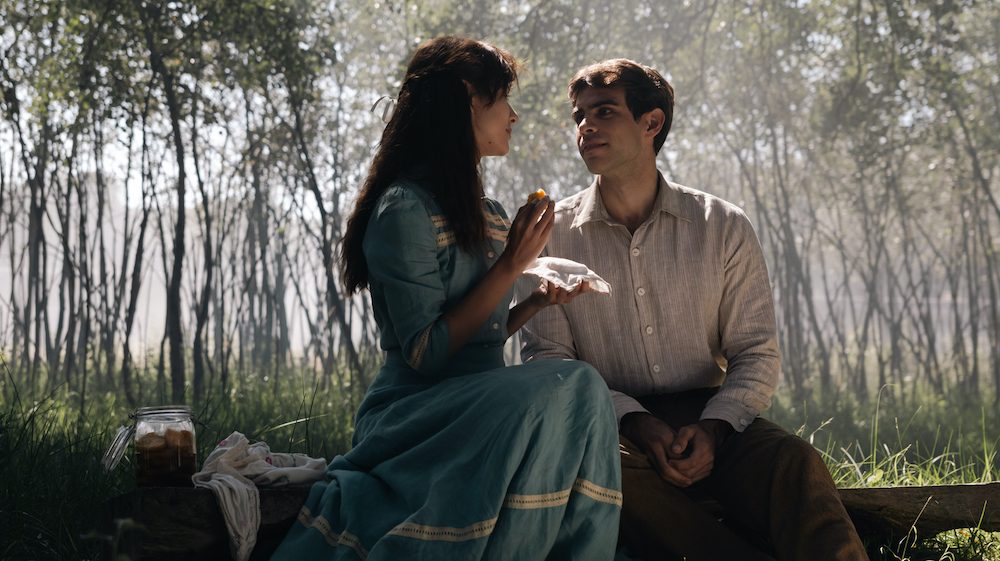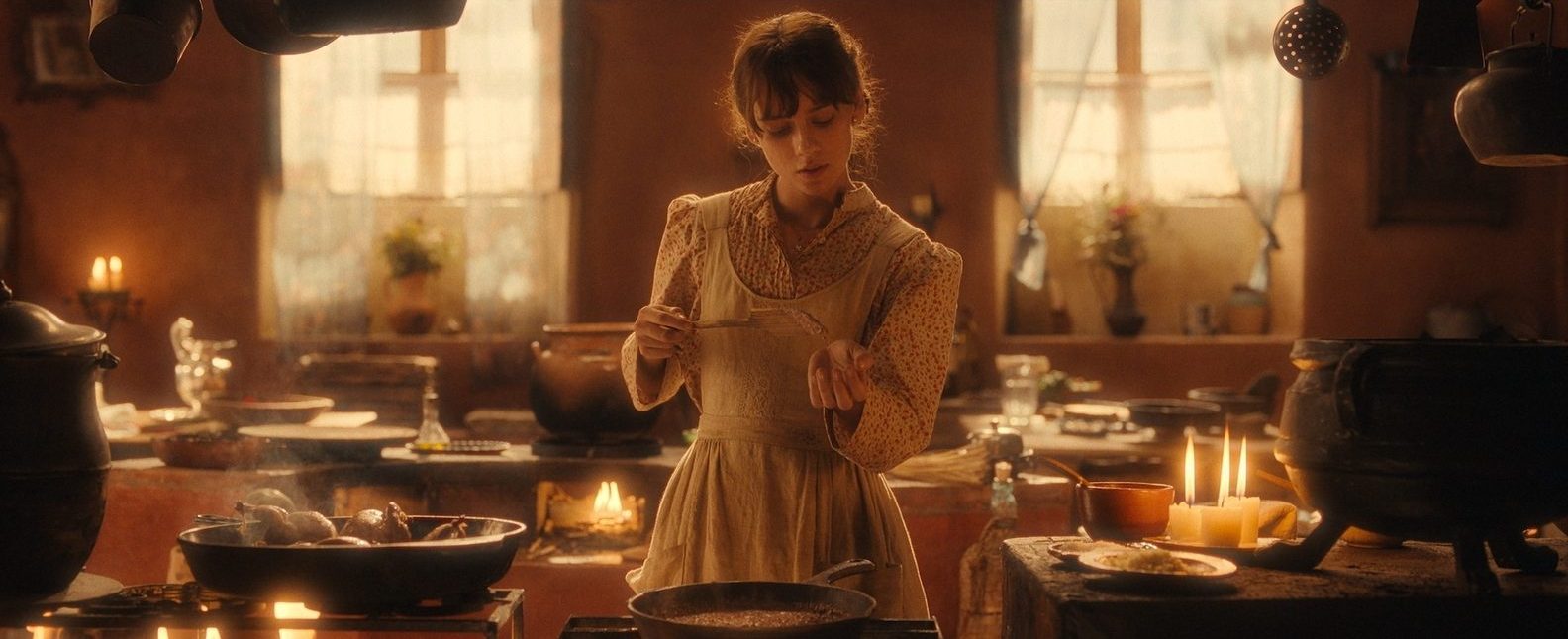HBO’s ‘Like Water for Chocolate’ (Originally titled, ’Como agua para chocolate’) transports the audience to the early 1900s in Mexico, focusing on the life and romance of Tita de la Garza and Pedro Múzquiz. Blending romance with magical realism in the backdrop of civil and political unrest in Mexico, the series delivers a captivating tale that features food as a character of its own. While there is a lot going on in the story, the main conflict centers on the story of Tita and Pedro and the trials and tribulations they have to go through in order to be together. The realistic elements surrounding their social and gender dynamics give a highly realistic touch to their story. SPOILERS AHEAD
Tita and Pedro’s Romance in Like Water for Chocolate is Fictional

‘Like Water for Chocolate’ is a fictional story penned by Laura Esquivel in her novel of the same name, originally published in 1989. While she used the real backdrop of a major political shift in Mexico, she used fictional characters to render the tale of a romance between two young people. While she didn’t base the characters of Tita and Pedro or their tragic romance on anyone, she was majorly influenced by the importance of food in her life as well as her culture to craft the tale.
For Tita, food is a language. She was born in the kitchen and has a peculiar relationship with food, where anything she cooks is infused with her emotions at the time of cooking. Thus, whenever Tita cooks anything for Pedro, it is laced with her feelings for him. So, in a way, when they are not even speaking to each other, Tita has already said a lot through her food. For Esquivel, presenting this aspect of food is incredibly important, and not just from the perspective of the story, but from her own thoughts about food and the kitchen.
Esquivel drew from her own love for food, especially Mexican dishes. She looked towards her childhood and her grandmother’s cooking to generate the nostalgia in the story. She also noted that while the end product is important, the process of its making is equally important as well. She talked about witnessing cooking as a transformative act for people around her, which is why she made it such an important part of Tita’s character.
Tita’s Relationship with Food Has a Deeper Meaning

Another thing that Esquivel consciously focused on while writing about Tita and her sisters was to show three different types of stories for when. With Rosaura, she shows a woman who prefers to stick to patriarchal norms and is happy with the system that the world follows. With Gertrudis, she presents layers of the feminist wave, where a woman focuses on her own desires and breaks from the bounds of her household to live life freely and by completely rebelling against the system. With Tita, however, she presents a more silent, yet in no way any less important, form of rebellion.
One of the things that Esquivel noted was for women to be associated with the kitchen as a means of subduing them. To tell a woman that her place is in the kitchen has sexist connotations. With Tita, Esquivel wanted to flip the script on that. Instead of showing the kitchen as a place where she is oppressed, Esquivel showed it as the one place where Tita finds the freedom to express herself despite the oppressions she suffer. Limiting her to the kitchen begins as a form of limitation for Tita, as she is forced to be confined to the house, unable to be with the person she loves.
However, it is in the kitchen where she most strongly expresses herself. Moreover, over the course of the story, we see her rebelling in her own way and breaking the family tradition that claimed her life, preventing the same thing from continuing and ruining the lives of other women like her in the family. Through this approach to the story, Esquivel makes the characters highly relatable to the audience, giving more realistic grounds to the story, even if it has the element of magical realism in it.
Do Tita and Pedro End Up Together?

‘Like Water for Chocolate’ begins with Tita and Pedro falling in love at a young age, but as they grow up, they discover one hurdle after another, which keeps them from being together for a very long time. When Pedro asks Tita’s mother for her hand in marriage, Mama Elena reveals that her plans for Tita are exactly what has happened in the family for ages. According to the rule, the youngest daughter can never get married and leave the house. She must remain there to look after her mother and will only be free when her mother is dead. BOOK SPOILERS AHEAD
Elena refuses to let Tita have her happiness and instead marries her eldest, Rosaura, to Pedro, who remains in love with Tita. Even when they are married and have a child, Pedro’s love for Tita is not affected. At one point, Tita comes across the possibility of marrying someone else and starting a new life. But the events transpire such that she ends up coming back to Pedro. As her mother had wished, Tita remains tied to Elena for the majority of her life and is free to pursue her own dreams only when Elena dies. However, even in death, Elena doesn’t leave Tita alone, and her ghost haunts her youngest daughter, creating more problems for her.
For all the twists and turns their story takes, Tita and Pedro eventually get married. It happens after Rosaura dies, leaving behind one daughter, whom she wanted to keep with her like Elena kept Tita with her. Tita, having been through that atrocity, prevents her niece from ending up with the same fate. When Rosaura dies, Pedro feels free to propose marriage to Tita once again. They get married but are not able to enjoy their marital bliss for long, as Pedro dies shortly after the wedding. The grief of losing her beloved kills Tita as well, and this is how their story ends.


You must be logged in to post a comment.